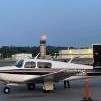Gross Weight Increase with Glass Cockpit
-
Members Online
- jetdriven
- Ken_CT
- takair
- Marc_B
- Hank
- Igor_U
- JimK
- FlyingScot
- Guillaume
- Rsmithref
- UteM20F
- Gilt
- bigmo
- Todd1
- Mooney-TN
- Mooney in Oz
- Scottknoll
- Gary Bymers
- brownm
- MB65E
- teethdoc
- rahill
- ArtVandelay
- C.J.
- KSMooniac
- Don Gates
- Adam Belle
- Stealth Mooney
- richardbrochu27
- Quantum Blueberry
- RGDantas
- Barneyw
- Fly_M20R
- Supereri73
- Rwsavory
- Sabremech
- Mooneydreamr
- McMooney


Recommended Posts
Join the conversation
You can post now and register later. If you have an account, sign in now to post with your account.